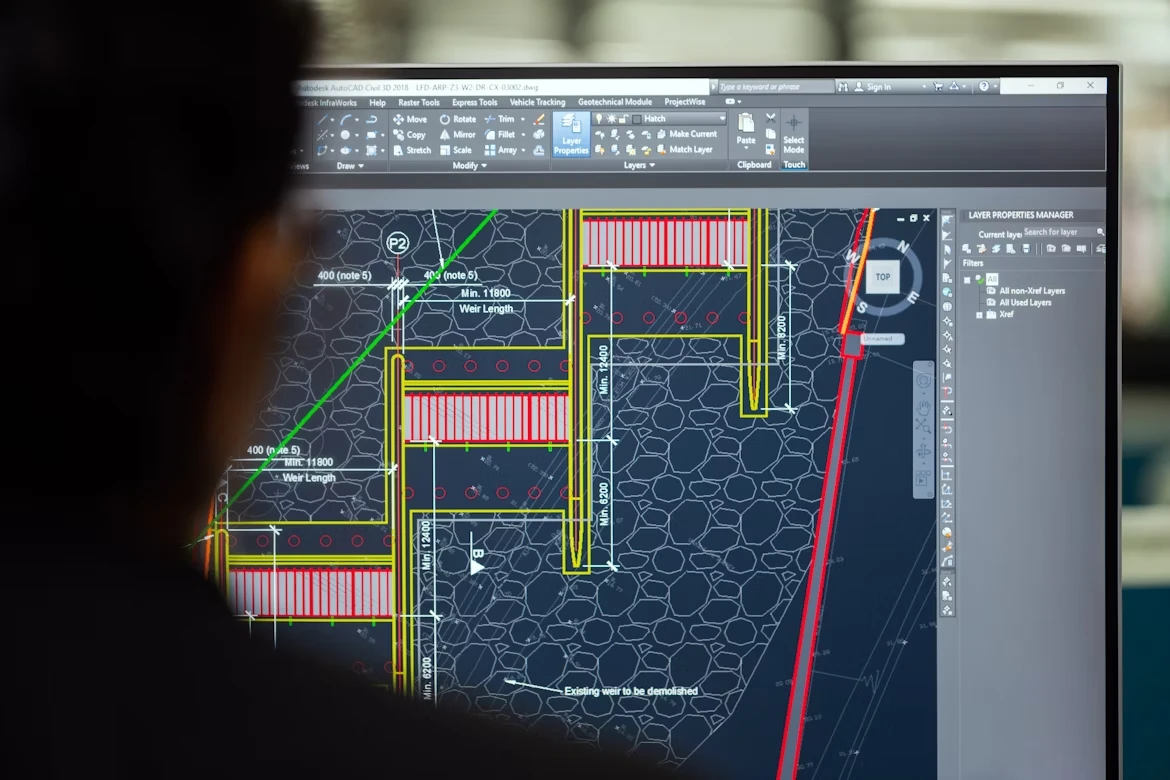
This website uses cookies
We use Cookies to ensure better performance, recognize your repeat visits and preferences, as well as to measure the effectiveness of campaigns and analyze traffic. For these reasons, we may share your site usage data with our analytics partners. Please, view our Cookie Policy to learn more about Cookies. By clicking «Allow all cookies», you consent to the use of ALL Cookies unless you disable them at any time.
If you are a software development team leader or manager, your success depends on your ability to get peak performance from your software development team. In this article, you will learn how to manage software development teams to achieve top performance.
In this article, you will learn about the following aspects of team management:
Hiring your R&D Team;
People management vs. project management;
In-house vs. offshore teams;
Communications;
Responding to conflicts;
Motivation;
Quality and productivity;
Software solutions;
Timelines.
Let’s get started.
Hiring Your R&D Team
Having a top-notch R&D group begins with hiring the right people. You can avoid making a management disaster by following these steps in recruiting your developers:
Create a detailed and accurate job description for each role, and use it in your recruitment ads.
Have each candidate interviewed by a manager who can accurately assess their technical skills.
Avoid rushing to fill roles. Take time to find the right people for your team.
Check personal, professional, and educational references! Skipping this step can allow unqualified employees to join your team.
Following these simple, common-sense steps will prevent most hiring mistakes. Don’t make the mistake of ignoring them.
People Management vs. Project Management
A fine line exists between supervising your developers and directing your projects. Failure to understand the difference can adversely impact every aspect of your operation.
Why the confusion? The answer is Twofold:
Team leaders assume that their project management methodologies are also employee-management tools.
Team leaders assume that strong supervision skills are all they need to make projects run smoothly.
Neither is true. Project management frameworks, like Agile, provide structure to how members of your team interact with one another. They do not relieve you of your responsibility to your employees.
Perhaps, a side-by-side comparison can make the distinction more clear:
The reason the distinction is important can now be seen more clearly. To successfully direct a development team, you must fill two roles: supervision of employees, and enforcement of project management principles.
For now, it is helpful for you to know that project development tools help you to direct a project team. They are not the end-all solution to overseeing your employees. For that, you need good old-fashioned management skills. But don’t worry—we will talk about those, too.
In-House vs. Offshore Teams
In many ways, managing a remote development team is similar to managing an in-house team, but there are also some significant differences.
Knowing what each team needs to succeed will help you achieve your business strategy, regardless of where development happens.
In-House Development Teams
There is no denying it. Having your R&D team just down the hallway is convenient. Change requests can be communicated quickly, and you are never more than moments away from knowing how the project is progressing.
On the other hand, you have to hire all those people. You must also perform the administrative duties associated with having employees. You will spend a lot of time managing employee issues rather than managing your project.
Even if the company has an HR department, you will still be involved in numerous administrative duties, including:
hiring;
employee training;
accommodating vacations;
addressing attendance issues;
addressing performance issues;
terminations.
Supervising direct workers onsite has its advantages. Just make sure you are prepared to perform the administrative duties that go along with having employees.
Offshore Development Teams
The most important thing to remember when learning how to manage software development team is that your remote team is still your team. They may be halfway around the world, but they work for you and your objectives are their objectives.
We at Technorely are concerned about our project delivery management. In this video, we described the main stages of how this process is conducted.
In order to manage an offshore R&D team successfully, you need to focus on building your relationship with your team. With Zoom, Slack, other tools, distance doesn’t have to be an impediment.
You will also have to build strong communication channels between your organization and your remote team — which brings us to our next topic.
Communication
To communicate effectively with your development team, and you must nurture good communications skills — for yourself and within the group.
To master communications, we need to first understand why communication needs to happen in the first place. Next, we need to be aware of the situations that can hinder it.
The Purpose of Communications
Your communications with your team should not be frivolous. Keeping the following purposes for communication in your mind can help focus your message.
Communication is used:
To convey information. Example: sharing deadlines with your team.
To affect a change in another person. Example: correcting undesirable behavior on the part of an employee.
To affect a change in events. Example: adding or eliminating a test procedure.
There are many other reasons we communicate, but keeping these three in mind can help you make your messages more effective.
Barriers to Communications
Even the best communicator can feel ineffective if the listener isn’t getting the message. And there are a lot of reasons why they might not.
In every instance of communicating with your team, or with team members individually, be aware that one or more barriers may be preventing them from understanding you.
They might think they do, and you might assume they do. But what you say and what they hear might be two different messages.
Barriers to communications generally fall into three categories. One or more will almost always be present to some degree. Being aware of them can help you be sure that you are understood. It can also help ensure that you understand what your team members say to you.
Common communication barriers include:
Noise. Noise can be external (a server cooling fan) or internal (distracted thinking). Ask the listener for feedback and look for verbal cues to make sure they understand you.
Attitude. A lack of interest, or feelings of anger, can prevent an employee from grasping what you say to them. As with noise, feedback and verbal cues will tell you if they are listening.
Semantics/Different Vocabularies. Some words and phrases have different meanings to different people. Avoid confusion by using only standard language and terminology for your industry. Be as specific as possible so that your message is not vague and open to interpretation.
Responding to Conflicts
Conflict is bound to occur anytime people come together. Within a development team, conflict can be destructive or constructive, depending on how you manage it.
Conflict, on an R&D team, usually arises when two or more members have differing ideas, and when both cannot be accommodated by whatever project management solutions you use.
Conflicts can also be non-work related and involve personal differences between coworkers.
Within a self-directed team, most minor conflicts are resolved by fellow team members, by consensus, or other method. When the conflict cannot be resolved, it might require your intervention.
Rather than shunning your responsibility to address issues of employee conflict, you can learn to embrace the opportunity and use it to make the team stronger.
The essentials of conflict management are simple:
Discuss the issue one-on-one with each employee involved. Do not have more than one employee present at the same time.
Listen to what each employee has to say about the conflict, but try to refrain from making a command decision until you hear both sides.
Decide how you would like to see the conflict resolved.
With all involved employees present, present some options and guide them in agreeing on one that is suitable to you and to them.
While conflict that results in demonstrative outbursts might require stronger corrective action, helping your employees to work through their own issues can help them do so later on, and you may never even know they disagreed.
Motivation
Good managers know how to motivate their teams. The first step is realizing that even the best team needs motivation to stay energized.
Motivating Team
Before you can encourage your team, you need to understand something about employee objectives. Every employee comes to work with two of them: a work objective and a personal objective.
The work objective is usually to satisfy the expectations of the team, the company, and its customers. But it may also be to help the boss (you) to succeed in your role.
The personal objective may be earning more money, getting personal recognition, having more control over their job, or any number of personal goals.
Keeping your team moving forward requires you to know and address the work and personal objectives of each team member.
Does Beth seem to delight in helping you when you are overloaded? Perhaps, her work objective is to keep you from getting stressed. If so, recognize her efforts and give her more assignments that involve helping you get your job done. Does Fred frequently ask for overtime? If so, you know money is a motivator for him.
These simple examples represent the actions you will see in your employees every day. The key to keeping them motivated to work hard is to find what they like, and — to the best of your ability — find ways to give them more of it when they do well, less when they don’t.
Motivating Your Team
As obvious as it may seem, you must never forget that your team is made up of individuals. At the same time, a good team also functions as a single entity, with a single goal.
Entire courses are written on building and motivating teams, but keeping three things in mind will help you keep your team energized and moving in the right direction:
Productivity/Quality
Managing your team’s productivity and quality requires a good project management system, but it also requires good employee management.
Once your project management software has spat out some numbers, you can decide if the team’s productivity or quality of work needs improvement. If so, use the following steps to get your numbers, and your team, moving in the right direction.
Look to see if you are following the best practices for the project management methodology or framework you are using. If not, adjust accordingly.
If the issues seem unrelated to your process controls, your employees must be deemed prime suspects.
If you determine the root cause of slow workflow or poor quality lies with your team members, consider this: poor employee performance is always the result of poor employee training, a lack of tools, and/or a bad attitude.
Were your employees trained properly? Do they have the tools they need to perform their jobs efficiently and accurately? If the answer to both of these questions is yes, then you must look to employee attitude as the reason your numbers are not what they should be. Again, adjust accordingly.
Software Solutions
Learning how to manage software team includes knowing the right tools to use for the job. A number of software solutions are available with features that can help direct your team. Here is a list of some of the more popular ones:
Jira
Jira, by Atlassian, offers features to help you build collaboration and communication within your team and between your team and other stakeholders. The platform integrates with Agile scrum boards, Git, Confluence, and other packages so you can manage your team better with whatever tools you have.
Confluence
Confluence, also by Atlassian, is enjoying increasing popularity with team managers. The platform offers tools for project planning, keeping meeting notes, managing project requirements, marketing plans, and blog posts.
GitHub
GitHub is a wildly popular open-source software development platform. As one of the largest code host platforms in the world, it is ideal for helping your team share code with you, or let your remote and local teams collaborate on projects.
Zoom
Zoom enables you to stay in touch with your remote team by facilitating online meetings, video webinars, online collaboration rooms, and the Zoom Phone.
Slack
Slack is a teamwork collaboration hub that makes communicating with remote groups easy. The platform facilitates conversations, exchanging documents, announcements, and integrates with other popular software.
Hubstaff
Hubstaff offers features to help you with time tracking, scheduling, and productivity monitoring. By helping you stay on top of your team’s activities, you can identify deficiencies before they affect productivity.
Timelines
Regardless of the solutions you employ to keep projects on track, employ them diligently. Like a musical ensemble performing a piece of music, your team should move to the rhythm set by your project plan. Unexpected challenges are certain to occur, but with practice, your team will learn to handle exceptions without missing a beat.
To get good results, you need to set clear and attainable objectives. Each objective must be accompanied by a deadline, with larger objectives broken into smaller milestones.
Conclusion
In-house or remote, your R&D team is your greatest asset. Getting the most from it is a matter of following solid management principles. It also requires a clear understanding of the unique challenges that in-house and offshore teams each present.
Applying the information you learned in this article will help you develop a team that will consistently meet or exceed your business objectives. Which is, after all, the whole point of having one.





